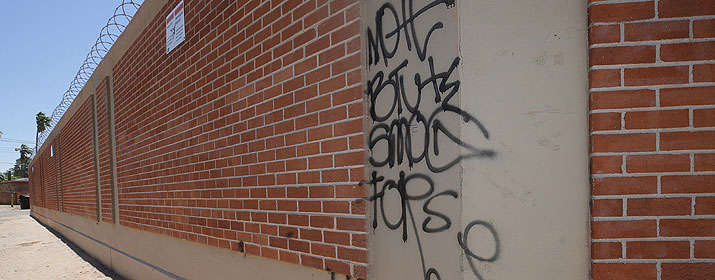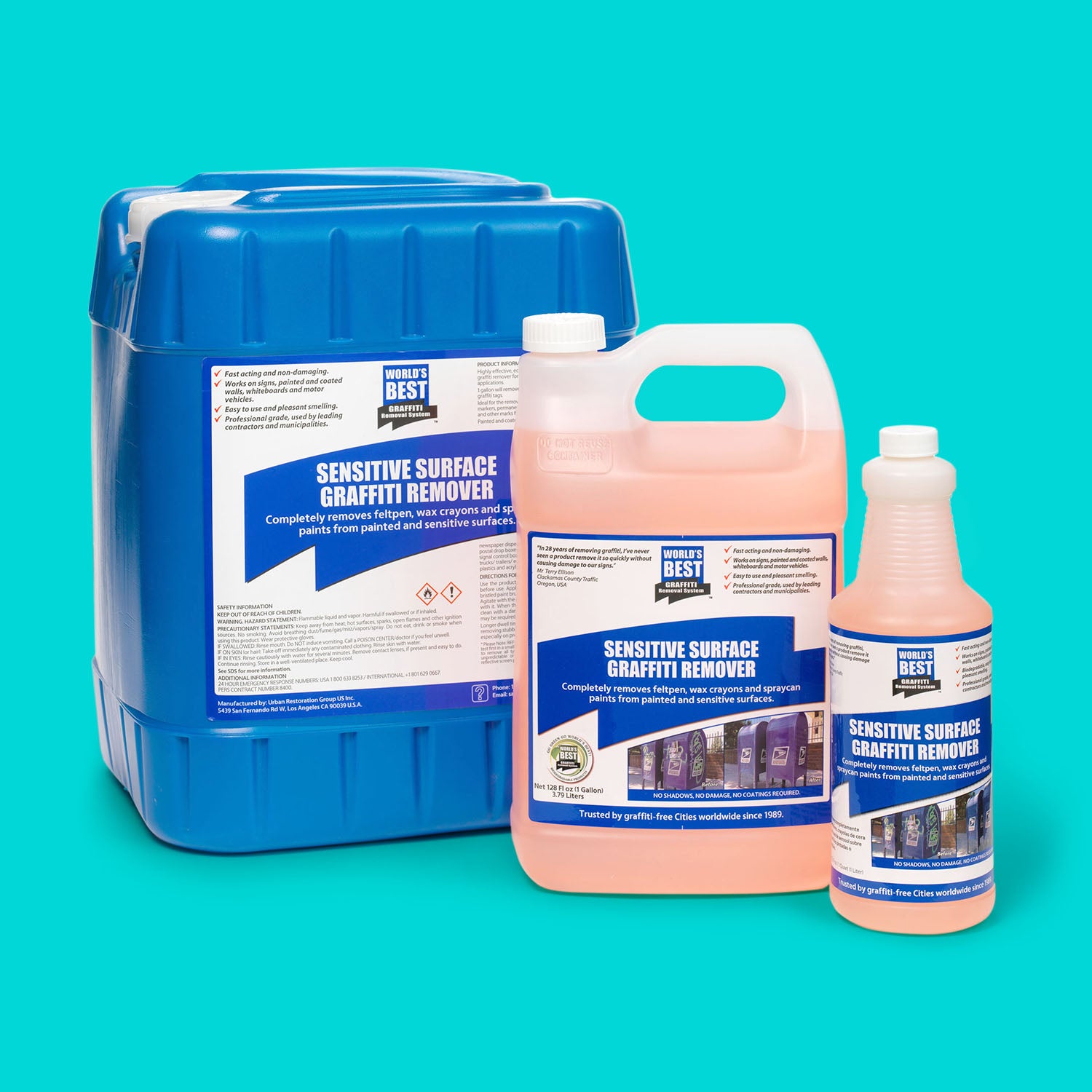Quick Response to Graffiti: Best Practices in Graffiti Removal
Hey there! Welcome to ‘Quick Response to Graffiti: Best Practices in Graffiti Removal.’
Dealing with graffiti can be as tricky as untangling a knot, but fear not! This handy guide will equip you with the knowledge and skills to tackle graffiti head-on and restore your space to its former glory.
From assessing the extent of the damage to choosing the right removal method, we’ve got you covered. By following these best practices, you’ll be able to remove graffiti efficiently and effectively.
So, let’s dive in and learn the secrets to combatting graffiti vandalism like a pro!
Key Takeaways
– Conduct a thorough inspection of the affected area and document the graffiti damage through photographs or sketches.
– Gather the necessary graffiti removal tools and materials, such as specific graffiti remover solutions, cleaning tools, and protective gear.
– Prepare the affected surface for graffiti removal by selecting appropriate cleaning agents and techniques, and consider applying anti-graffiti coatings or installing physical barriers.
– Choose the appropriate graffiti removal method based on surface type and severity of graffiti, considering the pros and cons of chemical and mechanical techniques.
Assessing the Extent of the Graffiti Damage
Assess the extent of graffiti damage by conducting a thorough inspection of the affected area. Start by examining the surface where the graffiti is present. Look closely for any signs of paint, markers, or other materials used to create the graffiti. Take note of the size, color, and design of the graffiti, as well as its location. Is it confined to one specific area or does it cover a larger surface? Are there any additional damages, such as scratches or etchings, caused by the graffiti? Take photographs or make sketches to document the damage for future reference.
Next, assess the condition of the surface beneath the graffiti. Is it porous or non-porous? This will help determine the appropriate removal method. Porous surfaces, like brick or concrete, may require more aggressive techniques to remove the graffiti without causing further damage. Non-porous surfaces, such as glass or metal, are usually easier to clean.
Evaluate the overall impact of the graffiti on the affected area. Does it detract from the appearance of the building or structure? Is it located in a highly visible area? Consider the potential impact on the community and the public’s perception of the area.
Gathering the Necessary Graffiti Removal Tools and Materials
To effectively remove graffiti, you’ll need to gather the necessary tools and materials. Here are the five essential items you should have:
– Graffiti Remover Solution: Look for a graffiti remover solution that’s specifically designed for the type of surface you’re cleaning. Make sure it’s safe to use and environmentally friendly.
– Cleaning Tools: Invest in a range of cleaning tools such as scrub brushes, scouring pads, and sponges. Different surfaces may require different tools, so it’s important to have a variety on hand.
– Protective Gear: Protect yourself while removing graffiti by wearing gloves, safety goggles, and a mask. Graffiti removers may contain harsh chemicals, so it’s crucial to take precautions.
– Pressure Washer: A pressure washer can be a powerful tool for removing graffiti from large surfaces or stubborn stains. Make sure to adjust the pressure and nozzle settings based on the surface you’re cleaning.
– Paint and Surface Repair Materials: After removing graffiti, you may need to touch up the surface with paint or repair any damage caused by the graffiti. Keep a supply of matching paint and repair materials handy.
Preparing the Affected Surface for Graffiti Removal
Before you begin removing graffiti, it’s important to prepare the affected surface properly. This involves selecting the appropriate cleaning agents and techniques based on the surface material and the type of graffiti.
Additionally, you should consider using surface protection methods to prevent future graffiti and ensure the safety of the surrounding environment.
Cleaning Agents and Techniques
Start by thoroughly cleaning the affected surface using appropriate cleaning agents and techniques. This step is crucial to ensure the successful removal of graffiti. Here are some effective cleaning agents and techniques to consider:
– Pressure washing: Using high-pressure water can help remove graffiti from surfaces like concrete and brick.
– Chemical cleaners: There are various graffiti removal products available in the market that can effectively dissolve and remove paint.
– Solvents: Solvents like acetone or mineral spirits can be used to break down the graffiti and make it easier to remove.
– Abrasive techniques: Scrubbing with a brush or using sandblasting can be effective for removing graffiti from hard surfaces.
– Heat application: Applying heat, such as with a heat gun or torch, can soften the paint and make it easier to scrape off.
Surface Protection Methods
After thoroughly cleaning the affected surface, you can now focus on protecting it from future graffiti by implementing surface protection methods.
One effective method is the application of anti-graffiti coatings. These coatings create a protective barrier that makes it easier to remove graffiti in the future. They can be applied to a variety of surfaces, including concrete, brick, metal, and wood.
Another option is the use of sacrificial coatings, which are designed to be easily removed along with any graffiti. These coatings can be reapplied as needed, providing ongoing protection.
Additionally, installing physical barriers, such as fences or screens, can deter graffiti vandals from accessing the surface.
Safety Precautions to Consider
To ensure your safety while preparing the affected surface for graffiti removal, it’s important that you take the necessary precautions. Follow these safety measures to minimize risks and protect yourself:
– Wear protective clothing, including gloves, goggles, and a mask, to shield yourself from chemicals and debris.
– Ensure proper ventilation in the area to prevent inhaling harmful fumes.
– Use caution when handling graffiti removal products, following the instructions provided by the manufacturer.
– Test a small inconspicuous area of the surface before applying any chemicals to ensure they won’t cause damage.
– Keep a first aid kit nearby in case of any accidental injuries.
Choosing the Appropriate Graffiti Removal Method
When choosing the appropriate graffiti removal method, you need to consider whether to use a chemical or mechanical method based on the type of surface and the severity of the graffiti.
Different surface materials require different approaches to avoid causing damage during the removal process.
Additionally, it’s important to assess the environmental impact of the chosen method to ensure it aligns with sustainability practices.
Chemical Vs. Mechanical Methods

When deciding on the appropriate method for graffiti removal, consider the pros and cons of chemical versus mechanical techniques.
Chemical methods involve the use of solvents or cleaners to dissolve or break down the graffiti, making it easier to remove. Mechanical methods, on the other hand, rely on physical force to scrub or scrape off the graffiti.
Here are some points to consider when choosing between the two:
– Chemical methods are generally faster and require less physical effort.
– Mechanical methods may be more effective for certain surfaces or types of graffiti.
– Chemical methods can sometimes damage the underlying surface if not used correctly.
– Mechanical methods may be more labor-intensive and time-consuming.
– Chemical methods often require the use of protective gear and proper disposal of chemicals.
Carefully evaluate your specific situation and choose the method that best suits your needs and constraints.
Surface Material Considerations
Consider the material of the surface in order to determine the most suitable method for removing graffiti. Different surfaces require different approaches to effectively remove graffiti without causing damage.
For smooth surfaces like glass or metal, chemical solvents can be used to dissolve the graffiti and make it easier to remove.
On porous surfaces like brick or concrete, mechanical methods such as pressure washing or sandblasting may be necessary to remove the graffiti from the tiny crevices. However, these methods can be abrasive and may cause damage to the surface, so it’s important to test a small area first and adjust the pressure accordingly.
Additionally, some surfaces like wood or painted surfaces may require a more delicate approach, using gentle solvents and techniques to avoid causing any harm.
Environmental Impact Assessment
To ensure a responsible approach to graffiti removal, you should evaluate the environmental impact of different removal methods, taking into account the surface material considerations discussed earlier. By considering the environmental impact of graffiti removal, you can choose the most appropriate method that minimizes harm to the environment.
Here are five factors to consider when assessing the environmental impact:
– Chemicals: Evaluate the type and toxicity of the chemicals used in the removal process.
– Water usage: Consider the amount of water required for the removal method, and its potential for runoff and water pollution.
– Energy consumption: Assess the energy consumption associated with the removal method, such as power tools or machinery.
– Waste generation: Determine the quantity and type of waste generated during the removal process.
– Environmental regulations: Familiarize yourself with local environmental regulations to ensure compliance and minimize negative impacts.
Applying the Selected Graffiti Removal Technique
To efficiently remove graffiti, begin by applying the selected graffiti removal technique. This step is crucial in ensuring a successful removal process. Once you have identified the best technique for the specific type of graffiti you’re dealing with, it’s time to put it into action. Whether it’s using chemicals, power washing, or sandblasting, make sure to carefully follow the instructions and safety guidelines provided by the manufacturer.
Before applying the selected technique, it’s important to prepare the affected surface. This may involve cleaning the area, removing any loose paint or debris, and protecting surrounding surfaces from potential damage. Once the surface is properly prepared, apply the graffiti removal solution or use the designated equipment according to the manufacturer’s instructions. Be sure to wear protective gear such as gloves and goggles to ensure your safety.
When applying the graffiti removal technique, it’s crucial to be patient and thorough. Some techniques may require multiple applications or additional scrubbing to fully remove the graffiti. Take your time and make sure to cover all affected areas until the graffiti is completely removed.
After applying the selected graffiti removal technique, evaluate the results. If the graffiti has been successfully removed, proceed with any necessary cleanup or restoration. If there are still remnants of graffiti, consider repeating the process or trying an alternative technique.
Post-Treatment Steps to Prevent Future Graffiti Vandalism
Implementing preventive measures is essential to deter future graffiti vandalism. After removing graffiti from surfaces, it’s important to take proactive steps to discourage vandals from targeting the area again. Here are some post-treatment steps you can take:
– Apply anti-graffiti coatings: These coatings create a protective barrier on surfaces, making it easier to remove graffiti in the future. They can be clear or tinted, and some even have sacrificial properties that allow for easy graffiti removal without the need for additional treatment.
– Install surveillance cameras: Visible security cameras can act as a deterrent for potential vandals. Make sure the cameras are strategically placed to cover vulnerable areas and are well-maintained.
– Increase lighting: Adequate lighting can make it harder for vandals to work discreetly. Install bright lights in areas prone to graffiti vandalism to minimize the risk.
– Encourage community engagement: Develop programs that involve community members in the maintenance and beautification of public spaces. When people take ownership of their surroundings, they’re more likely to report vandalism and discourage future acts of graffiti.
– Establish a rapid response system: Create a process for quickly addressing and removing new graffiti. Promptly removing fresh graffiti sends a message that vandalism won’t be tolerated.
Frequently Asked Questions
What Are the Potential Health Risks Associated With Graffiti Removal Chemicals and How Can They Be Minimized?
When removing graffiti, it’s important to be aware of potential health risks associated with the chemicals used. These risks can include skin irritation, respiratory problems, and eye irritation.
To minimize these risks, make sure to wear protective clothing, such as gloves and goggles. Use environmentally friendly and non-toxic graffiti removal products whenever possible.
Additionally, ensure proper ventilation in the area where graffiti removal is taking place to reduce exposure to harmful fumes.
How Can I Determine if the Graffiti on My Property Is Gang-Related or Just Random Vandalism?
To determine if the graffiti on your property is gang-related or just random vandalism, there are a few things you can do.
– Look for specific symbols, letterings, or colors associated with local gangs.
– Pay attention to any messages or tags that may indicate gang presence.
– Consider talking to neighbors or local law enforcement for additional information.
Are There Any Legal Requirements or Permits Needed for Removing Graffiti From Public Spaces?
You don’t need any legal requirements or permits to remove graffiti from public spaces.
It’s important to act quickly and efficiently to remove graffiti as soon as it appears, as it can attract more vandalism and give a negative impression of the area.
By using the right tools and techniques, you can effectively remove graffiti and restore the public space to its original state.
Remember to always prioritize safety and follow any local regulations regarding disposal of graffiti removal materials.
Can Graffiti Removal Methods Damage the Underlying Surface or Paint?
Graffiti removal methods can potentially damage the underlying surface or paint. It’s important to choose the right method to avoid causing further harm.
Some methods, like abrasive cleaning or power washing, can be too harsh and strip off the paint or damage the surface.
However, there are safer alternatives available, such as using biodegradable solvents or specialized graffiti removal products. These options are designed to effectively remove the graffiti without causing any harm to the underlying surface or paint.
Are There Any Eco-Friendly or Non-Toxic Graffiti Removal Options Available?
There are definitely eco-friendly and non-toxic options available for graffiti removal. These methods prioritize the safety of both the environment and the underlying surface. They utilize biodegradable solvents or natural ingredients that are gentle on the paint or material.
Conclusion
In conclusion, when it comes to removing graffiti, it’s important to follow a systematic approach. This includes assessing the extent of the damage, gathering the necessary tools and materials, and preparing the surface. Once these steps are complete, it is important to choose the appropriate removal method and apply the technique. Finally, taking post-treatment steps to prevent future vandalism is essential. By following these best practices, you can effectively and efficiently respond to graffiti and maintain a clean and graffiti-free environment.

Welcome to my website! My name is Jeremy Henschke, and I am a dedicated professional Residential Pressure Washing Technician. With years of experience in the industry, I have honed my skills and expertise to provide top-notch services in Residential Pressure Washing, Commercial Power Cleaning, Eco-Friendly Washing Solutions, and Graffiti Eradication Services. Read more

